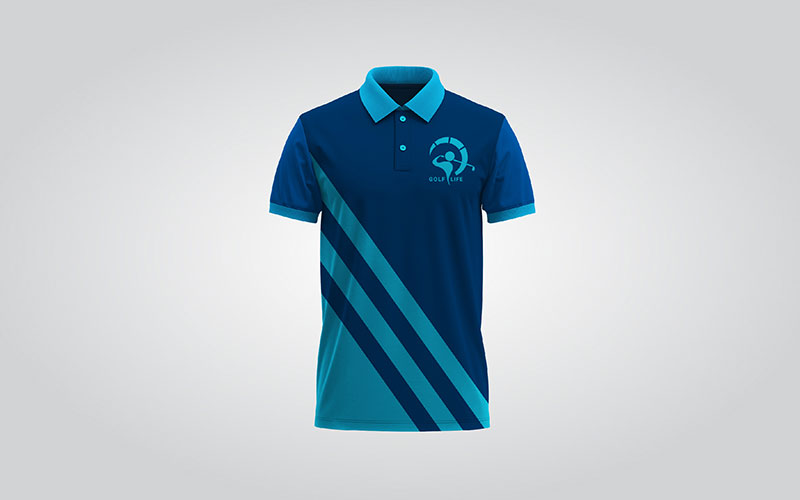
Shirt design has evolved beyond simple functionality, becoming a significant form of artistic expression and cultural identity in the world of 足球波衫 and fashion. Originally, jerseys were designed primarily to distinguish one team from another, using basic colors and minimal graphics. However, over the years, the design process has become more sophisticated, integrating elements such as team history, city culture, and even social causes. Today’s jerseys are not only performance wear but also fashion statements that fans proudly wear both on and off the field. The use of advanced fabrics, bold patterns, and intricate graphics has transformed jerseys into dynamic canvases that tell stories and invigorate fans.
The development of shirt design has been driven by advances in linen technology, enabling materials that are both lightweight and durable. Modern jerseys are often made from moisture-wicking fabrics that keep athletes dry by drawing sweat away from the skin. The fabrics used are made to improve performance, with features such as elasticity for freedom of movement and setting up for better breathability. These advancements ensure that the shirt is not just successfully appealing but also enhances the athlete’s performance on the field. Additionally, the incorporation of anti-odor and antibacterial treatments in fabrics has further elevated the quality and functionality of sports jerseys.
Color plays an important role in shirt design, as it is often the most identifiable area of a team’s identity. Teams carefully choose colors to characterize various attributes; for instance, red may represent passion and aggression, while blue conveys stillness and stability. Some teams make use of colors to honor bicycles or culture of their hometowns. For example, certain shades of green or brown might pay respect to local areas or city points of interest. Designers use color mindsets to create successfully striking jerseys that also bring to mind specific emotions in players and fans, making color a powerful tool in shirt design.
The incorporation of video elements such as art logos, typography, and patterns has become a staple in modern shirt design. The logo is often the centerpiece, serving as a symbol of the team’s ethos and legacy. Typography choices can also convey an awareness of history, with vintage-style fonts evoking a classic look and modern fonts adding a contemporary edge. Patterns, on the other hand, allow for more creative freedom, with some teams opting for traditional stripes or checkered designs, while others research summary shapes or hide. These video details give jerseys a unique look, setting them apart from competitors and adding a layer of uniqueness to the design.
Customization has had shirt design to another location level, with methods of personalized names, numbers, and even unique color mixtures. Fans are now able to purchase jerseys that feature their favorite players’ names, or even their own, making the experience of wearing a shirt more personal and linked to the adventure. This trend reaches to teams as well, with many leagues introducing alternate jerseys or special-edition kits for specific occasions. For instance, teams may wear unique jerseys for charity matches, heritage games, or special events, often incorporating one-off designs that resonate with fans and raise funds for important causes.
The cultural impact of shirt design goes beyond the sports industry, influencing mainstream fashion and streetwear trends. Jerseys are now commonly welcomed in casual settings, worn by people who may not even follow the adventure. The aesthetic selling point of jerseys—combining bold colors, video elements, and identifiable branding—has made them popular items in urban fashion. High-profile collaborations between sports teams and fashion designers have further blurred the line between sportswear and streetwear, resulting in limited-edition releases that sell out quickly. This blend of fashion and sports has expanded the selling point of jerseys, adjusting them into collectibles and statements of personal style.
Shirt design in addition has be a platform for social and political statements, with teams using their kits to increase awareness for various causes. For instance, jerseys with rainbow colors may be worn to support LGBTQ+ pride, while others may feature slogans or symbols to promote anti-racism or environmental sustainability. This trend demonstrates the bigger role of sports in society, where athletes and teams are not just viewed as entertainers but also as influencers with a voice. By integrating messages of social justice and advocacy into their designs, teams can connect with their communities on a deeper level.
The rise of digital tools has revolutionized the shirt design process, enabling more intricate and detailed graphics that were previously impossible to achieve. Advanced software enables designers to research 3d modeling, augmented reality, and virtual prototyping, streamlining the process from concept to production. This technological shift in addition has opened doors for fans to participate in design competitions, where they can submit their own shirt concepts for an opportunity to see them taken to life. The collaborative area of digital design democratizes the process, inviting fresh ideas and views that enrich the overall aesthetic of shirt design.
Sustainability has become a growing concern in shirt design, with many teams opting for eco-friendly materials and production processes. Recycled polyester, organic cotton, and biodegradable fabric dyes are increasingly used to create jerseys that reduce environmental impact. Some sports leagues have even launched initiatives where fans can return old jerseys for these recycling, promoting a circular economy within the industry. By prioritizing sustainability, shirt design is growing to meet the demands of a more green conscious market, while also setting an example for other sectors in fashion and manufacturing.
In conclusion, shirt design has transformed from simple team identifiers into complex expressions of culture, technology, and style. As it continues to change, the focus remains on balancing appearance with performance, while also addressing bigger societal and environmental concerns. The next frontier in shirt design will likely involve increased customization options, integration of wearable technology, and continued query of sustainable materials. Whether known as fitness gear, fashion items, or cultural artifacts, jerseys are a testament to the power of design in by using identity and connecting people across different walks of life.